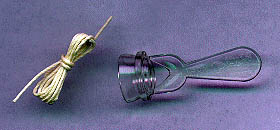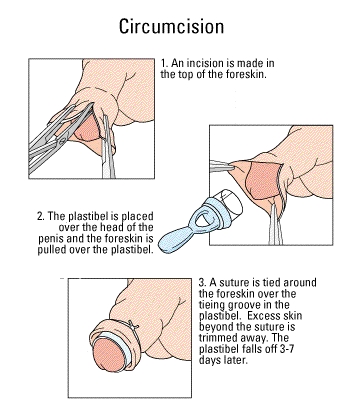The Plastibell™ circumcision device is a tool for male neonatal circumcision.
The Plastibell has a clear plastic ring with a handle. A deep groove runs circumferentially around the ring. The device is placed under the foreskin (which must be slit and forcibly separated from the glans to allow entry). A ligature (thread) is tied tightly around the foreskin, crushing it into the groove, resulting in strangulation of the blood supply to the distal foreskin. The necrotic tissue and device fall off after about seven days. It's main advantages include "ease of use."
The glans is generally protected during the procedure by the ring. No bandage is required, allowing the parent to watch for any signs of infection. Healing occurs while the edges of the prepuce are secured in the ring, making skin bridges (where the foreskin's end heals to the glans' corona) unlikely. Cosmetically, there will be little to no circumcision scar, though as usual with any circumcision, there will be a color change where the (formerly) inner and outer layers of foreskin meet.
At least 50% of American non-therapeutic infant circumcisions since 1980 have been performed with a Plastibell. The Plastibell was invented by Hollister Inc in 1950 and first reported on in 1953.


Image Source: www.circlist.com/instrstechs/plastibell.html


